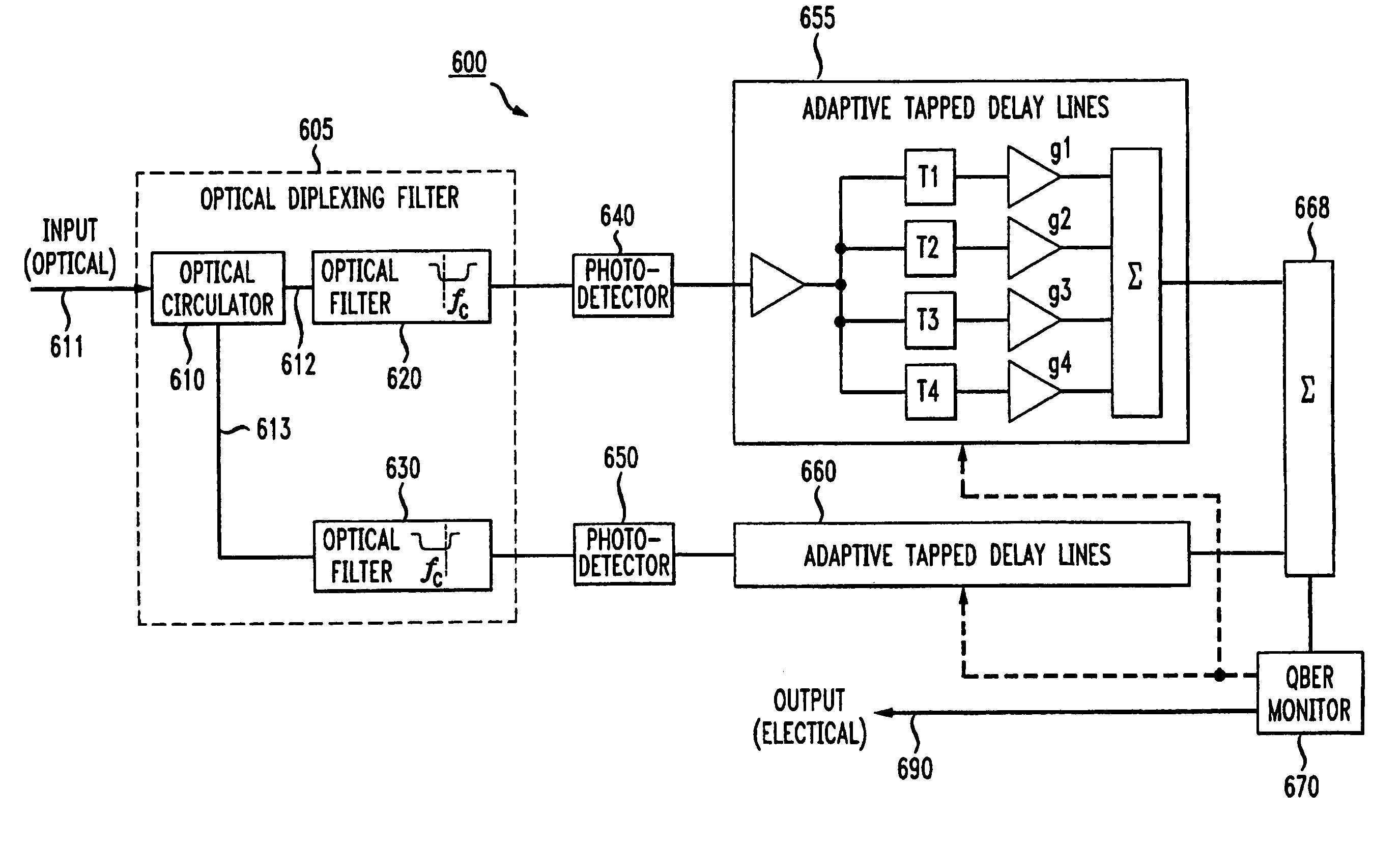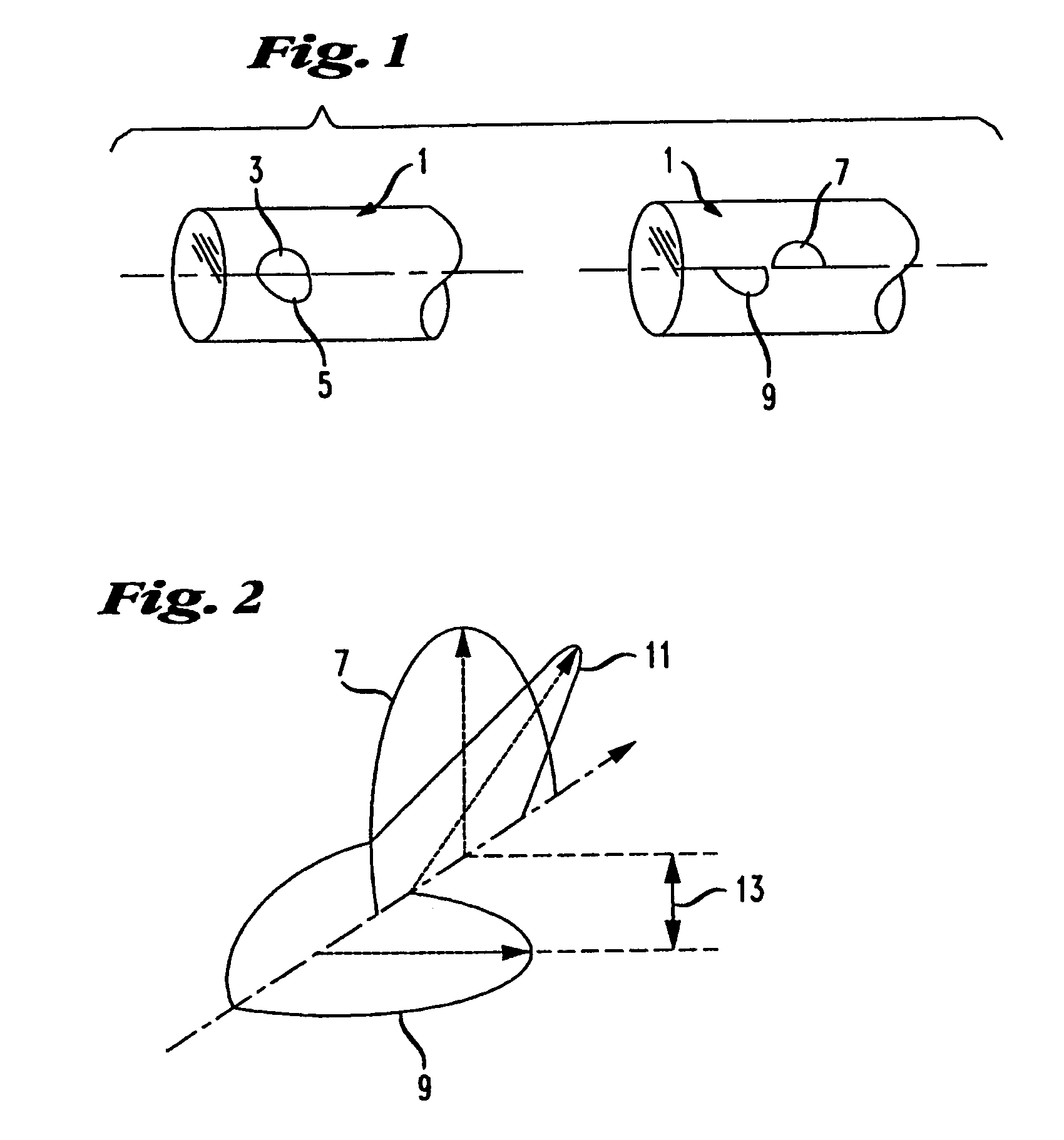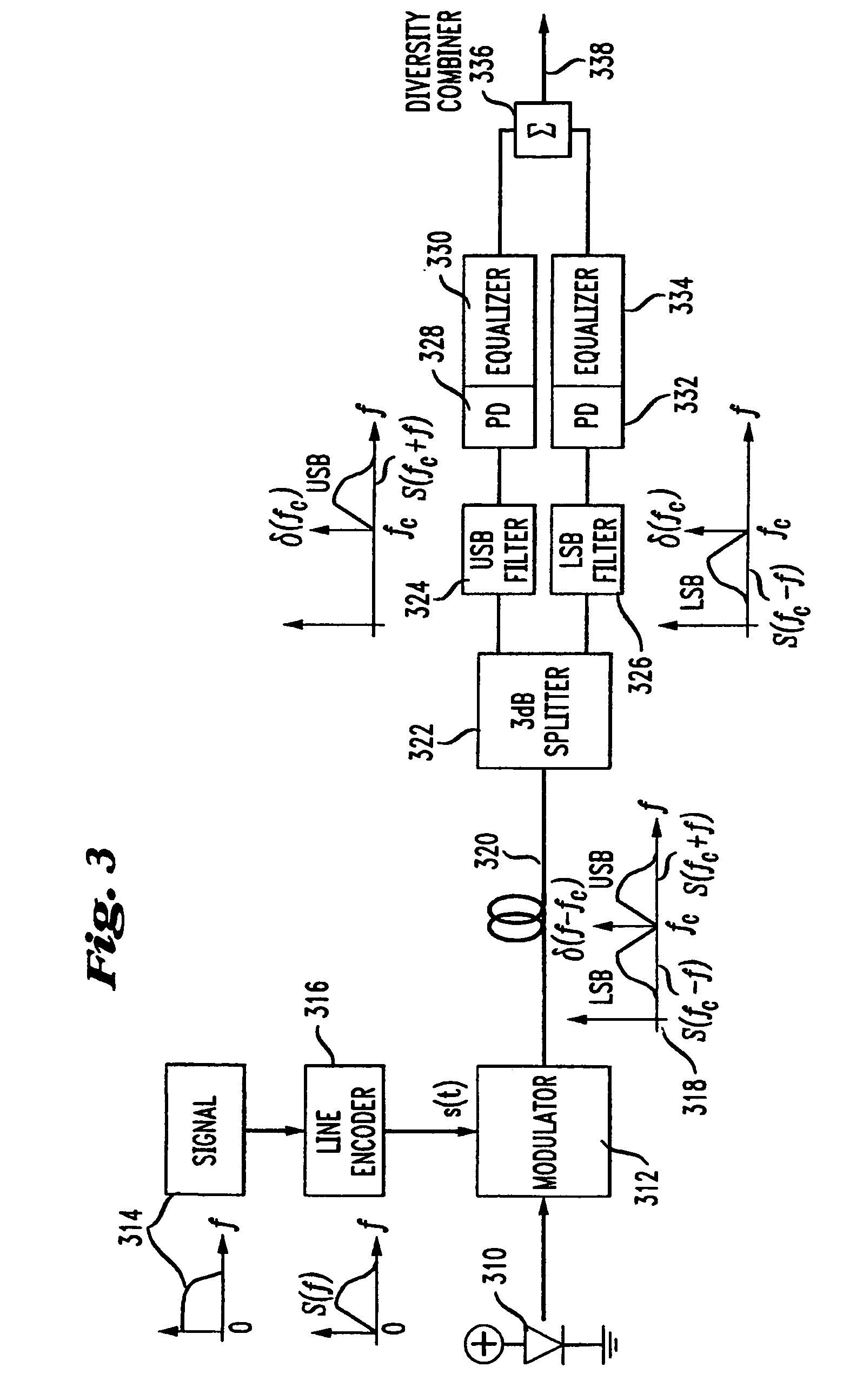System for mitigating the effects of fiber dispersion by separate detection of two transmitted sidebands
a technology of fiber dispersion and transmission sideband, applied in the field of optical communication, can solve the problems of relative delay, inability to compensate for electrical dispersion of double sideband modulated signals, and degradation of system performance, so as to reduce polarization mode dispersion, improve optical spectral efficiency, and mitigate the effects of pmd
- Summary
- Abstract
- Description
- Claims
- Application Information
AI Technical Summary
Benefits of technology
Problems solved by technology
Method used
Image
Examples
Embodiment Construction
[0027]In a diversity receiver, which separately detects the two sidebands on an amplitude modulated optical carrier, the duplicated information in the two sidebands suffers different impairments during transmission. By selectively combining the recovered information from the two sidebands, one can achieve a better immunity against fiber dispersion impairments such as chromatic and polarization mode dispersions.
[0028]The present invention is illustrated in FIG. 3. The signal to be transmitted is optionally fed into a line encoder, which then amplitude modulates the optical carrier using a modulator. Both sidebands of the amplitude modulated signal are then transmitted over the optical fiber. The received signal is split into its two sidebands using an optical diplexing filter. In a manner analogous to an RF diplexor, the optical diplexing filter separates an input optical signal into two output signals, with different optical frequencies being routed to different output ports. FIG. 3...
PUM
 Login to View More
Login to View More Abstract
Description
Claims
Application Information
 Login to View More
Login to View More - R&D
- Intellectual Property
- Life Sciences
- Materials
- Tech Scout
- Unparalleled Data Quality
- Higher Quality Content
- 60% Fewer Hallucinations
Browse by: Latest US Patents, China's latest patents, Technical Efficacy Thesaurus, Application Domain, Technology Topic, Popular Technical Reports.
© 2025 PatSnap. All rights reserved.Legal|Privacy policy|Modern Slavery Act Transparency Statement|Sitemap|About US| Contact US: help@patsnap.com



